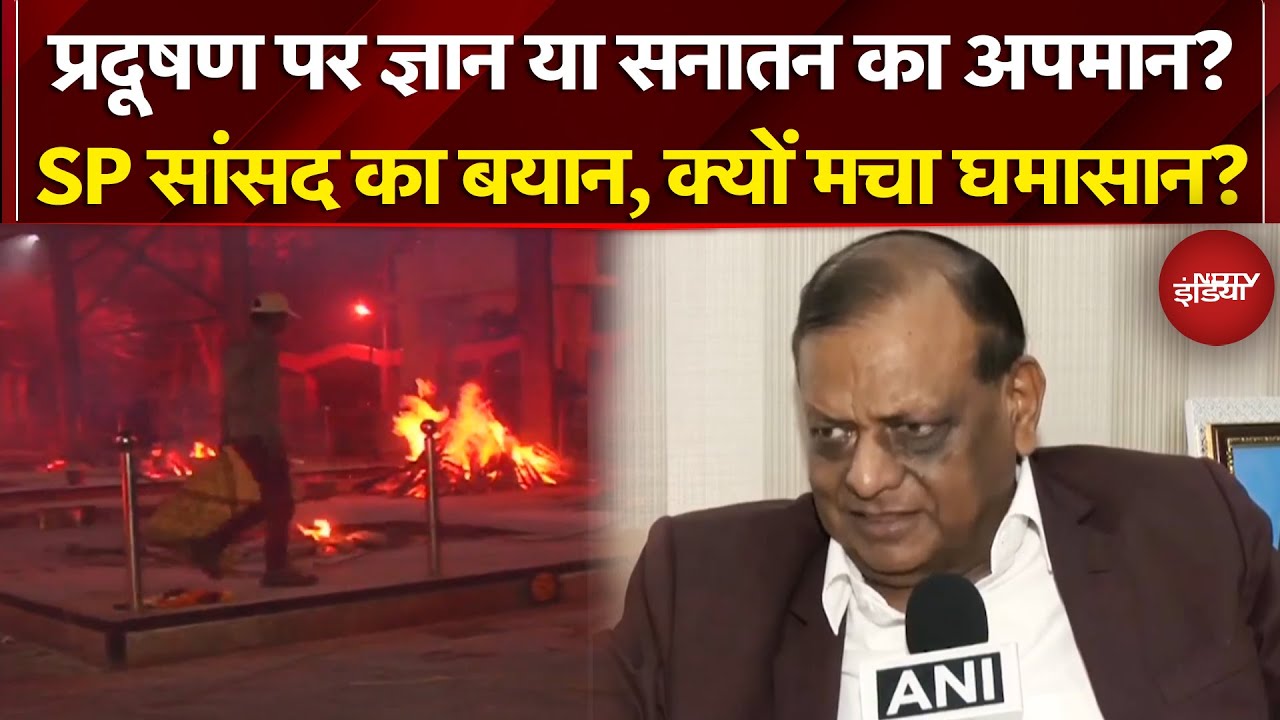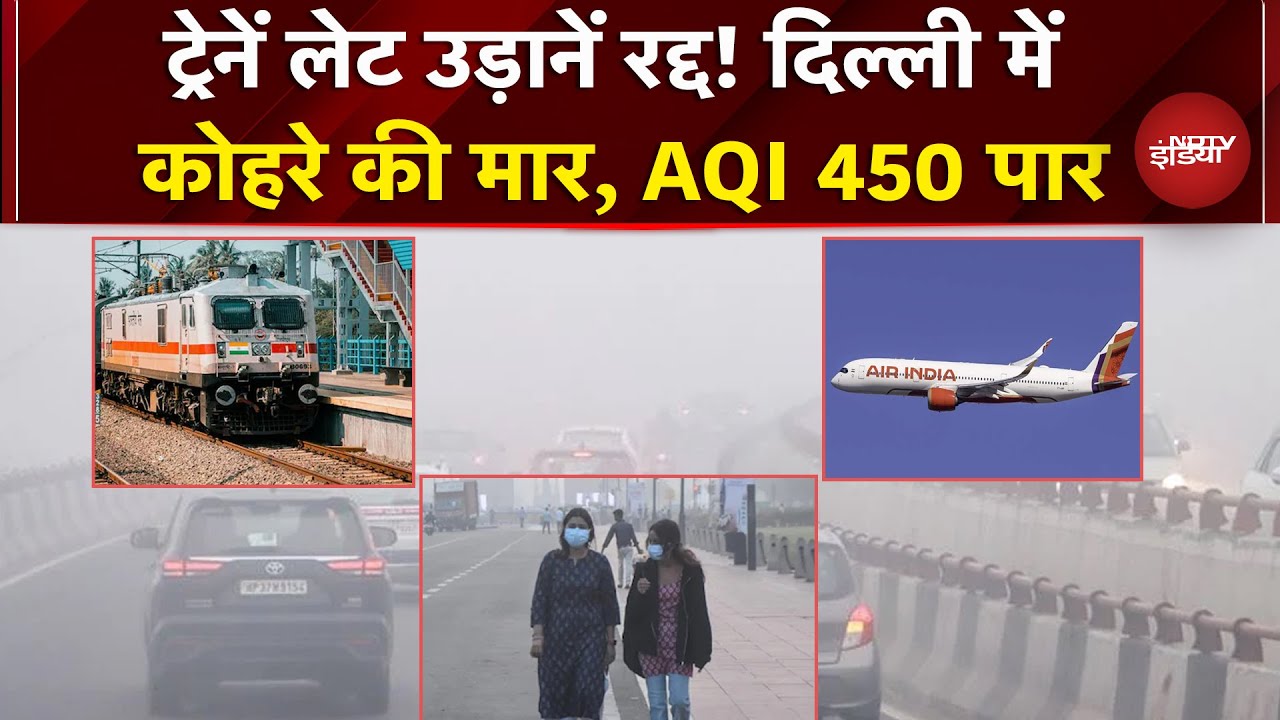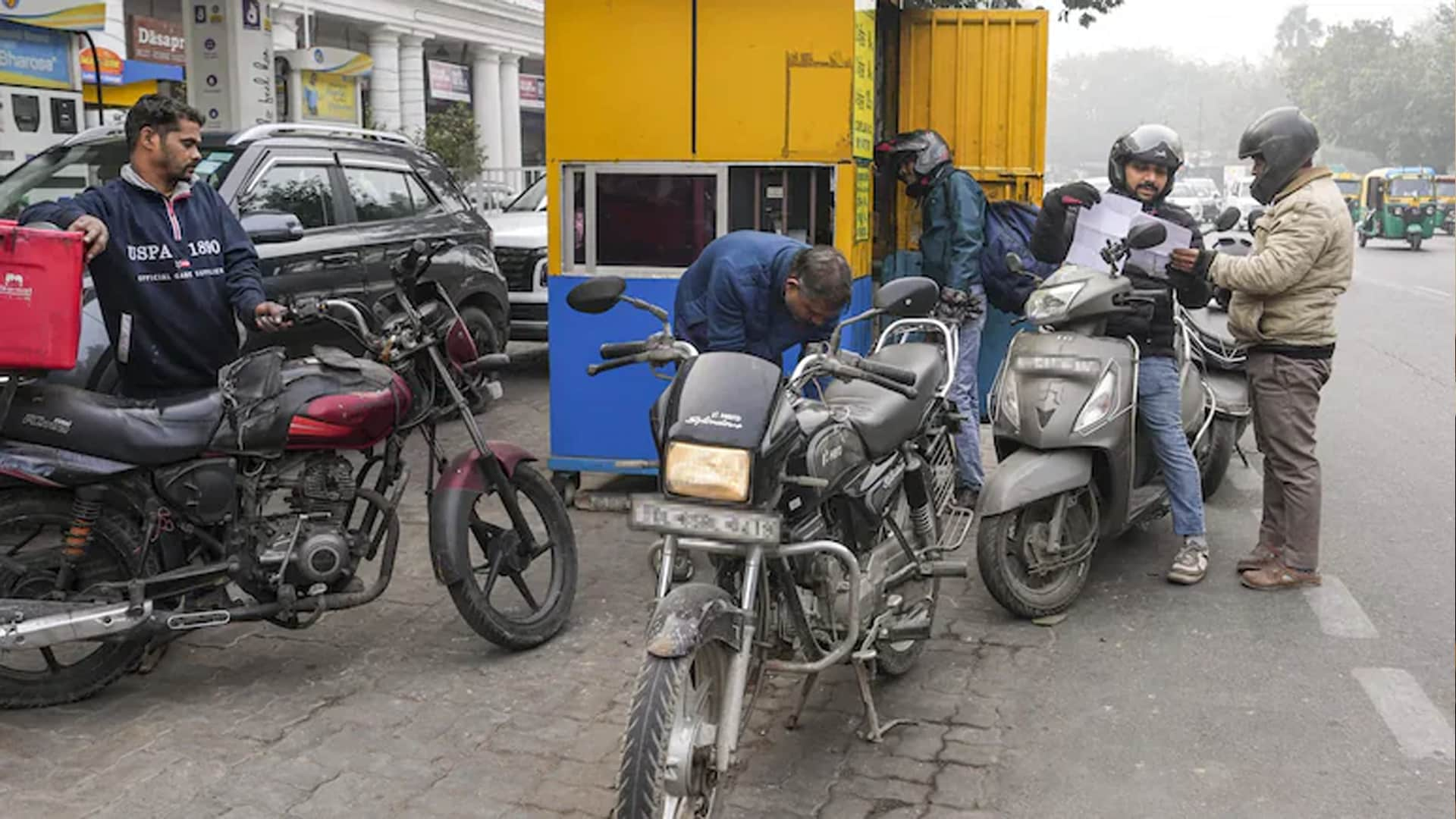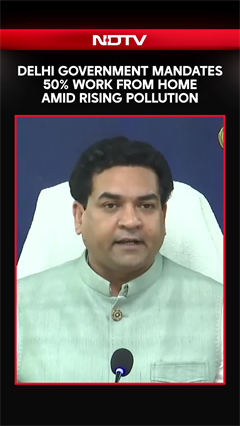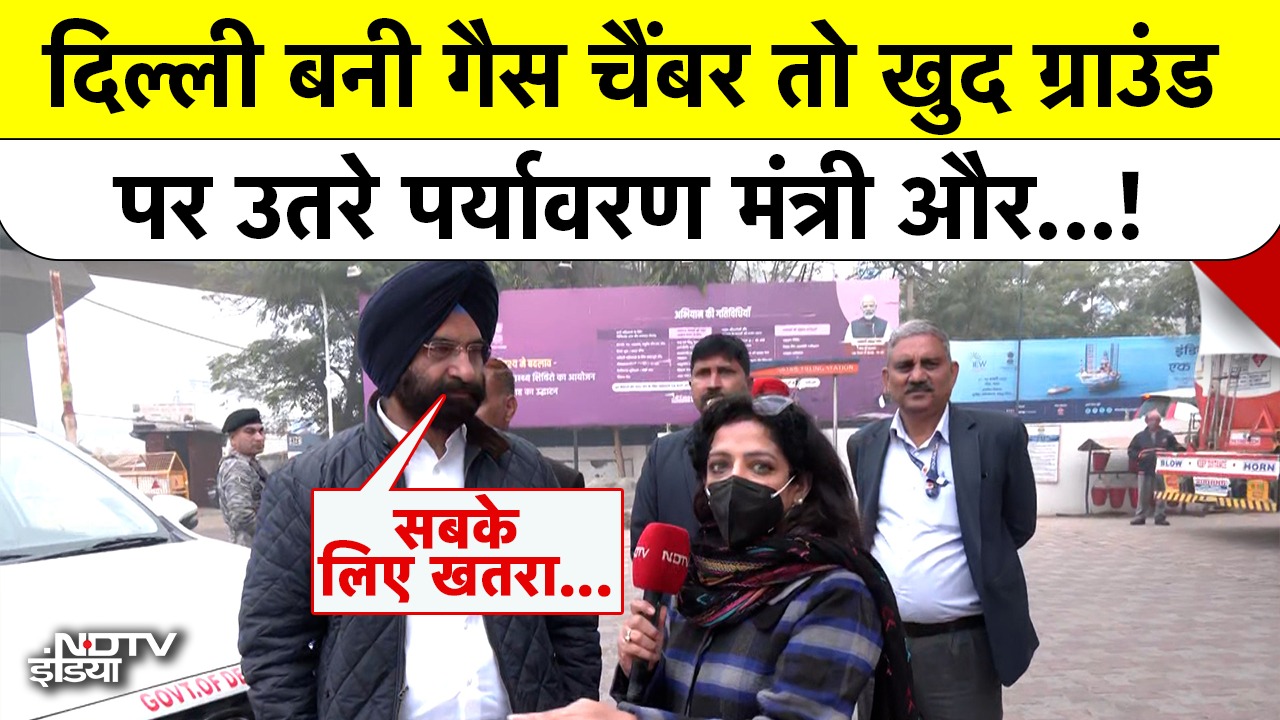- Home/
- Behind Toxic Delhi Air, Local Factors' Role Bigger Than Farm Fires: Experts
Behind Toxic Delhi Air, Local Factors' Role Bigger Than Farm Fires: Experts
Stubble burning alone could not have led to this alarming spike in Delhi's air pollution levels if local factors, including vehicle emissions, had not already poisoned the national capital's skyline, a latest report on Delhi's toxic air quality has pointed out.
Anumita Roychowdhury, executive director of Centre for Science and Environment, told NDTV that their latest report has found that PM2.5 levels in Delhi-NCR rose by a "staggering and unprecedented" 68 per cent within just 24 hours on November 2.
The spike in PM2.5 levels was recorded at a time when the contribution of stubble burning in Delhi's PM2.5 levels is gradually declining. Data recorded by System of Air Quality and Weather Forecasting And Research (SAFAR) and Decision Support System For Air Quality Management In Delhi has shown that the share of stubble burning in Delhi's PM2.5 concentration over the past few days has been in the 25-35 per cent range -- lower than previous years. This component is likely to rise as stubble burning reaches its peak.
Asked if this means that internal polluting factors are powering the dip in air quality, Ms Roychowdhury said, "Absolutely. That means the bulk of pollution coming is from local sources. If we do not pay attention to this fact and keep our focus on one reason, we are not going to find a solution to the problem."
The analysis by CSE's Urban Lab lists the key factors behind Delhi's toxic air. The report notes that this spike in pollution levels is not uncommon during this time of the year and is generally associated with stubble burning in north Indian states before farmers start work on the winter crop. Meterological factors helping the movement of smoke to Delhi-NCR is also behind the jump in Delhi's Air Qualty Index. "But it must be kept in consideration that this rapid build-up in a short time span is able to tip air quality into severe category because baseline pollution from local sources is already very high," Avikal Somvanshi, head of CSE's Urban Lab, has said.
Ms Roychowdhury said the contribution of stubble burning to Delhi's PM2.5 concentration is around 25 per cent, lower than previous years. "This shows that the internal sources of pollution in Delhi have increased. Among the internal sources of pollution, the vehicles contribute upto 50 per cent to 60 per cent to Delhi's pollution levels," she said.
The CSE report lists the key factors behind Delhi's toxic air quality. It notes that over the past five years, PM2.5 levels started rising steadily towards the beginning of October. "This year, the levels started to rise from the middle of September. Illustratively, this increase was at a slower rate and by the end of October, the levels were 20-30 per cent lower than the average levels for the corresponding Octobers of the previous five winters - since 2018-19," the report states.
The smog episode started earlier this year as compared to the last, the report says.
Pointing to the spike in PM2.5 levels, the report states, "The share of PM2.5 in PM10 is an important indicator of the impact of combustion sources. While coarser PM10 comes largely from dust sources, the tinier PM2.5 come more from vehicles, industry and open burning." This year, the report says, the percentage share of PM2.5 in PM10 has crossed 50 per cent and this "indicates higher impact of combustion sources".
On the role of crop residue burning in the dip in air quality, the report states that "farm stubble fire count has increased -- but is still much lower than the seasonal peak of previous year".
"SAFAR's estimate has shown that the percentage contribution of farm stubble fire to Delhi's PM2.5 concentration had crossed 25 per cent on November 2; it was in the 10-20 per cent range in the week leading to November 2. This is expected to rise in the coming days. The fire instances in Punjab and Haryana are yet to peak," the report states.
The CSE has called for urgent plugging of key policy gaps. "While several measures taken over the years to clean up fuels and technology across transport and industry and control dust sources, more action is needed at a scale and speed to address the remaining policy gaps for meeting the clean air targets," it states.
"Need local and regional scale multi-sector action to cut emissions from vehicles, industry, power plants, waste burning, construction and dust sources. Need transformative changes in infrastructure
and systems in each of these sectors," it adds. The report also calls for swift action to control episodic pollution factors such as burning of crop residue.
The CSE is a public interest research and advocacy organisation based in Delhi that studies and spreads awareness about the need for sustainable development.
The burning of stubble across agricultural fields of north India has been blamed for the dip in Delhi's air quality every winter. The issue has also emerged as a politically sensitive matter, with states shifting blame.
The Supreme Court today asked several state governments to take take steps to stop stubble burning. "We want it stopped. We don't know how you do it, it's your job. But it must be stopped. Something has to be done immediately," the court said.
also read
Delhi Government To Install Air Purifiers In 10,000 Classrooms As Pollution Soars
Reported by Ishika Verma, Edited by Amit ChaturvediBattle For Breath: Mumbai's Elite Enclave Turns Pollution Hotspot
Reported by Jitendra Dixit, Edited by Srishti Kapoor"Leaving Delhi After 13 Years": Man Blames City's Pollution For Developing Asthma
Edited by Astitva Raj
Latest Stories
- Reported by Ishika Verma, Edited by Amit Chaturvedi | Friday December 19, 2025
The government plans a phased rollout, funded through the environment cess, though exact installation timelines have not been announced.
- Reported by Jitendra Dixit, Edited by Srishti Kapoor | Friday December 19, 2025
Air quality in and around Bhakti Park and Wadala Truck Terminal (TT) has plummeted in recent weeks, with AQI levels soaring beyond 300 - classified as "severe".
- Edited by Astitva Raj | Friday December 19, 2025
His post quickly became popular among people who have experienced similar health and safety concerns while living in Delhi.
- Press Trust of India | Friday December 19, 2025 , New Delhi
Commuter awareness rises after Delhi's BS-VI and No PUC, No Fuel enforcement; fuel sales dip in border areas, PUC queues remain steady, says DPDA president.
- Written by Chandrashekar Srinivasan | Friday December 19, 2025 , New Delhi
India's lawmakers were supposed to discuss the horrid blanket of toxic air smothering the national capital region sometime during Parliament's winter session, which wrapped up Friday. But they could not find the time.
................................ Advertisement ................................
Latest Videos
Opinion
Blog | Well Done, Delhi. You've Turned Lung Sacrifice Into A Badge Of HonourSaikat Kumar Bose
Monday November 10, 2025Till some years back, Delhiites would ask angry questions to those in power about the capitals annual tryst with toxic air. This has changed. Those in the driving seat dont see the need to answer now.
Opinion | Why Indians Have Just Given Up On Air Pollution CrisisTanushree Ganguly
Friday December 20, 2024While some may argue that people in Delhi are now more aware of air pollution than they were a decade back, my rebuttal would be that awareness does not mean that people are concerned.
Opinion | You Must Outrage Over Filthy Air More Than Once A YearJyoti Pande Lavakare
Tuesday December 10, 2024Delhi welcomed us with monsoon rains and mangos. We were home. Fast forward a couple of years, in the winter of 2012, I found myself in denial about something other parents, mostly expats, were calling toxic air.
Opinion | Delhi's Air Pollution Situation Is Like A Bad MarriageNishtha Gautam
Friday November 22, 2024On a good day, such as today, the AQI reading in Delhi is 407. We are jubilant at the sickly sunshine trickling through the slightly dissipated smog. At least its not 1600.
दिवाली... पराली... सियासी जुगाली!Ashwini kumar
Monday November 18, 2024दिल्ली-एनसीआर में प्रदूषण का समाधान तो आज तक मिला नहीं. हर साल चिंतित होकर हम-आप सांसों की तकलीफ के साथ-साथ दिल और ब्लड प्रेशर के मरीज भी क्यों बनें?








